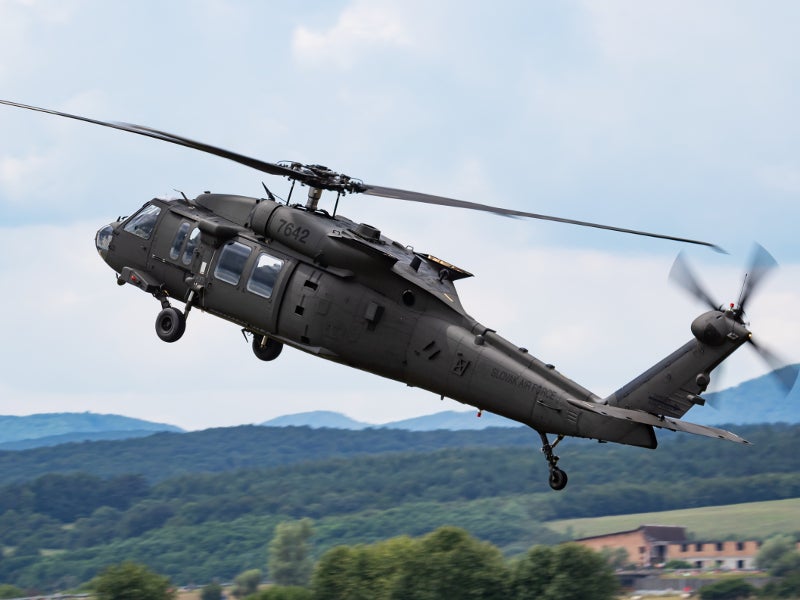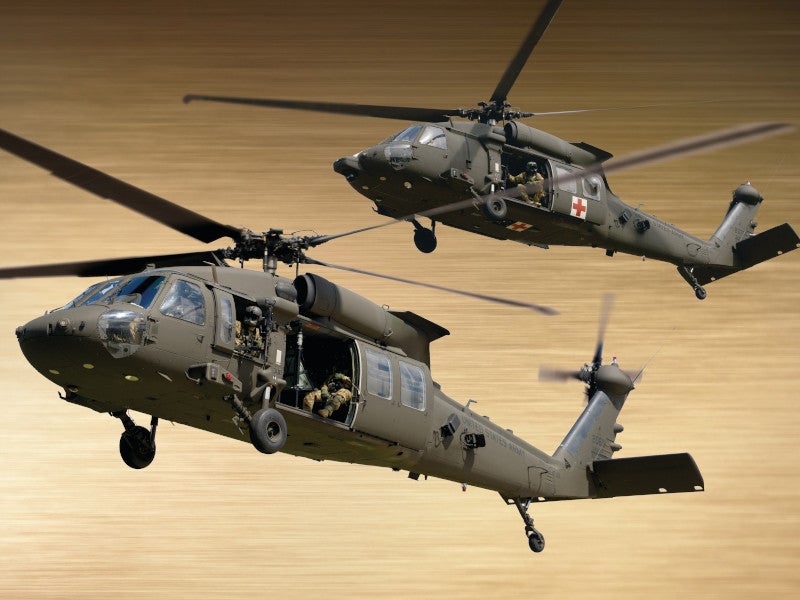Comprehending the Mechanics and Design Behind Uh 60 Helicopters
The UH-60 helicopter, generally called the Black Hawk, stands as a pinnacle of modern-day rotorcraft technology, personifying a blend of durable engineering and complex technicians. From its creation to its existing versions, the advancement of this aircraft showcases a blend of innovation and usefulness. As we peel back the layers of the UH-60's style, a globe of elaborate systems and thorough engineering comes to light. Recognizing the mechanics and design behind this versatile aircraft unveils a realm where accuracy meets power, and where each element plays an important function in attaining flight.
History of UH-60 Helicopters
The history of UH-60 helicopters traces back to the late 1970s when the United States Army looked for a functional and sophisticated utility helicopter to change its aging fleet. In action to this requirement, the Sikorsky Aircraft Firm established the UH-60 Black Hawk helicopter. Introduced in 1979, the UH-60 quickly came to be a staple in army operations due to its remarkable capacities.
The UH-60 was created to stand out in a variety of missions, consisting of troop transportation, medical evacuation, digital warfare, and unique operations. Its capacity to adapt to various functions made it a valuable property to the U.S. uh 60. Military and other army forces worldwide
Throughout the years, the UH-60 platform has actually undergone numerous upgrades and variations to boost its performance and maintain rate with progressing mission demands. These helicopters have actually seen substantial service in problems such as the Gulf Battle, Afghanistan, and Iraq, showcasing their dependability and convenience in diverse functional settings. The UH-60's rich history is a testimony to its enduring tradition as a top energy helicopter.

Engine and Power Systems
Making use of innovative propulsion innovation, UH-60 helicopters are equipped with innovative engine and power systems to make sure optimal efficiency and dependability in a variety of functional scenarios. The UH-60, commonly understood as the Black Hawk, is powered by two General Electric T700-GE-701D engines, each qualified of providing up to 1,940 shaft horse power. These turboshaft engines offer the necessary drive for the helicopter to carry out its goals efficiently, consisting of troop transportation, medical emptying, and combat assistance.

Rotor System and Aerodynamics
How do the blades system and aerodynamics of UH-60 helicopters add to their functional performance and trip capabilities? The blades system of the UH-60 helicopter plays an important duty in providing lift and propulsion. The UH-60 includes a four-bladed, fully expressed rotor system that allows for high ability to move and security during flight. This layout allows the helicopter to carry out a wide variety of missions, from transportation and medical emptying to combat operations.
Aerodynamics additionally play a vital role in the performance of UH-60 helicopters. The streamlined fuselage and blades blade style reduce drag, enabling the helicopter to accomplish higher rates and better gas performance. The wind resistant style of the UH-60 also contributes to its capacity to run in diverse environmental problems, consisting of warm temperature levels and high altitudes.
Avionics and Flight Control Equipment

In its detailed sychronisation with the rotor system and aerodynamics of UH-60 helicopters, the avionics and flight control systems form a crucial network of technologies shaping the airplane's operational capacities. In the UH-60, these systems include electronic display screens, interaction radios, GPS navigation, climate radar, and auto-pilot systems.
The flight control systems of the UH-60 are liable for converting the pilot's inputs right into the suitable changes to the rotor system, guaranteeing stable trip and maneuverability. These systems contain hydraulic actuators, servos, and computer systems that collaborate to manage the tail and primary blades, as well as various other flight control surface areas. By specifically handling the helicopter's trip characteristics, these systems make it possible for pilots to carry out a vast array of goals, from transportation and search-and-rescue to fight operations, with precision and self-confidence.
Role and Applications in Aviation
The duty and applications of avionics and flight control systems in aviation are indispensable to guaranteeing the effective and safe operation of airplane, including UH-60 helicopters. Avionics systems in UH-60 helicopters include an array of digital systems that help in navigating, communication, surveillance, and controlling numerous airplane features. These systems include electronic displays, auto-pilot systems, communication radios, general practitioner navigating devices, and weather condition radar. Trip control systems play an important duty in steering the helicopter airborne, maintaining stability, and guaranteeing specific motions. The fly-by-wire modern technology used in modern UH-60 helicopters converts pilot inputs right into digital signals, which are then analyzed by the trip over at this website control computers helpful resources to change the aircraft's control surface areas. Additionally, these systems include security attributes such as autopilot modes, terrain awareness cautioning systems, and stability augmentation systems to improve the general security and operational abilities of the UH-60 helicopters in different objectives, consisting of army transportation, medical emptying, search and rescue, and aerial firefighting.
Final Thought
In verdict, the UH-60 helicopter is a versatile airplane with an abundant history and progressed design. Its engine and power systems, rotor system, the rules of aerodynamics, avionics, and trip control systems all work with each other to make it a dependable and reliable machine.
In its complex sychronisation with the blades system and aerodynamics of UH-60 helicopters, the avionics and flight control systems develop an essential network of innovations forming the aircraft's operational abilities.The trip control systems of the UH-60 are liable for translating the pilot's inputs into the suitable modifications to the blades system, making certain stable flight and maneuverability. Avionics systems in UH-60 helicopters include an array of digital systems that help in navigating, communication, monitoring, and controlling different aircraft functions. Furthermore, these systems integrate safety and security attributes such as auto-pilot settings, surface recognition warning systems, and stability augmentation check out here systems to enhance the overall safety and operational capabilities of the UH-60 helicopters in different objectives, including troop transport, medical evacuation, search and rescue, and airborne firefighting.
Its engine and power systems, blades system, the rules of aerodynamics, avionics, and trip control systems all work together to make it a effective and trusted equipment.
Comments on “Making Best Use Of Security: Crucial Maintenance Tips for Your UH 60 Helicopter”